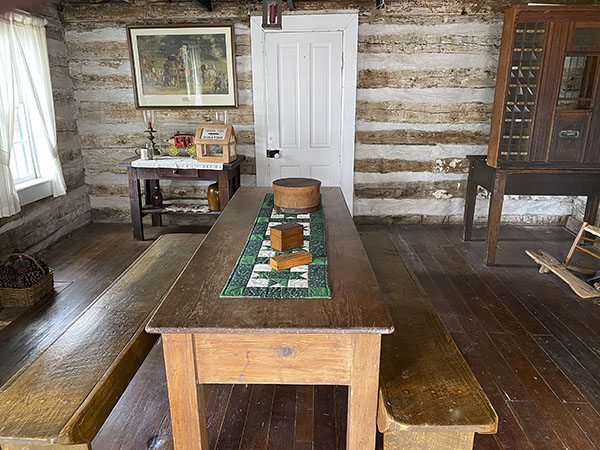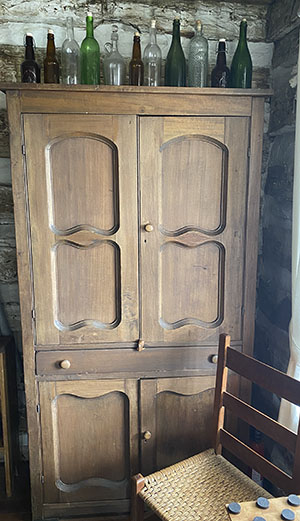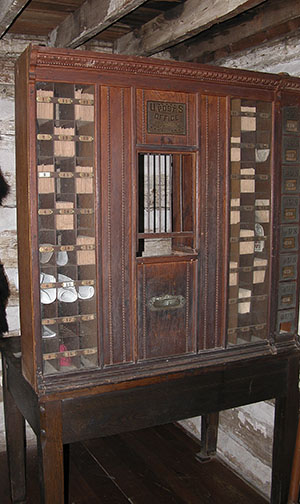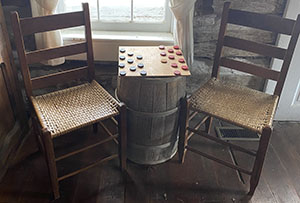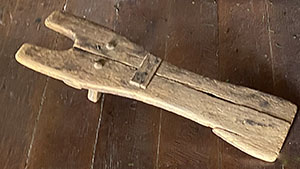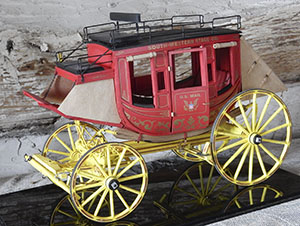W.W. built a second log cabin about 10 feet north of the residential cabin. This would be the place of business. The empty space between the two buildings is called a dogtrot. It had a functional purpose. It allowed air to move throughit, thus cooling the adjacent cabins. It also provided a cooler place to sit. McDonald enclosed this space sometime before the Civil War with weatherboard, making a third room.
An old meaning of the word "Tavern" denoted a place where travelers could stop to rest, obtain a meal and drink, and maybe rent a room for the night. Such was McDonald's waystation on the South-Western Stage Company's route from St. Louis to Springfield, Missouri. The passengers disembarked for some refreshment while W.W. and his hired man, Isaac Warren, changed the team of horses.
The stage route through Pulaski County in the 1850s and 1860s was located on a trail used by Ice Age mastodons and Native Americans. The trail followed what geographers termed the great interior ridge, an upland land form that separated the drainage basins of Missouri and Arkansas rivers, stretching from St. Louis to northwest Arkansas. In the antebellum period, it had several names: Osage Trace, Kickapoo Trace, Southwest Trail, and St. Louis to Springfield Road. During and after the Civil War, this major thoroughfare through the Ozarks was known as the Wire Road, State Highway 14, Route 66, and Interstate 44.
